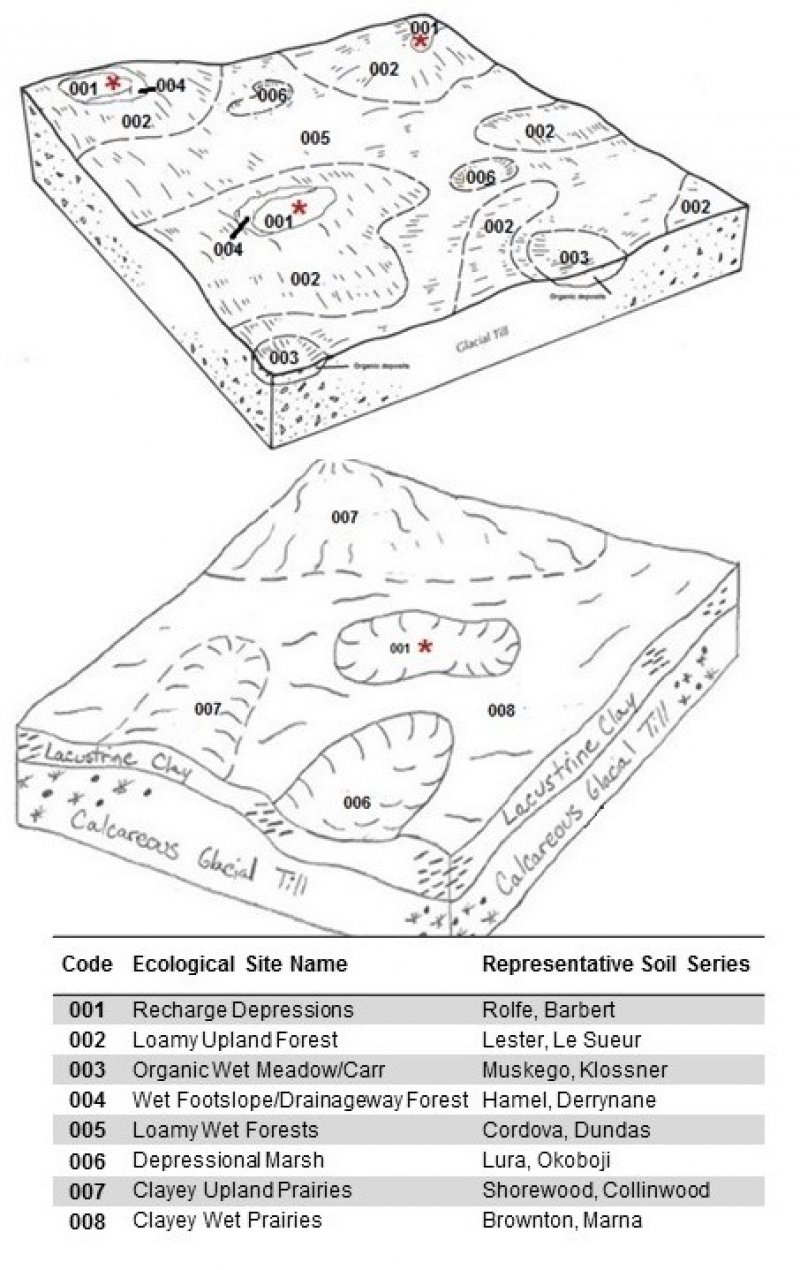
Natural Resources
Conservation Service
Ecological site R103XY014MN
Recharge Depressions
Last updated: 10/04/2023
Accessed: 12/22/2024
General information
Provisional. A provisional ecological site description has undergone quality control and quality assurance review. It contains a working state and transition model and enough information to identify the ecological site.
MLRA notes
Major Land Resource Area (MLRA): 103X–Central Iowa and Minnesota Till Prairies
MLRA 103 is in Minnesota (56 percent) and Iowa (44 percent) and consists of approximately 18 million acres. It is in the Western Lake Section of the Central Lowland Province of the Interior Plains in an area known as the "Des Moines Lobe" of the Wisconsin-age ice sheet. The MLRA is mostly on a young, nearly level to gently rolling, glaciated till plain that has moraines and glacial lake plains in some areas. The plain is covered with glacial till, outwash, and glacial lake deposits. Recent alluvium consisting of clay, silt, sand, and gravel fill the bottoms of most of the major river valleys. Paleozoic bedrock sediments, primarily shale and limestone, underlie the glacial deposits in most of the area.
The annual precipitation increases from northwest to southeast. Most of the rainfall occurs as high-intensity, convective thunderstorms during the summer. Two-thirds or more of the precipitation falls during the freeze-free period. Snowfall is common in winter. Ground water supplies are adequate for the domestic, livestock, municipal, and industrial needs. Nearly all of this area is farmland, and about four-fifths is cropland.
Classification relationships
Major Land Resource Area (MLRA): Central Iowa and Minnesota Till Prairies (103) (USDA Handbook 296, 2006)
USFS Subregions: North Central Glaciated Plains Section (251B); Upper Minnesota River-Des Moines Lobe (251BA) and Southern Des Moines Lobe (251Be) Subsections (Cleland et al. 2007)
Ecological site concept
The Recharge Depressions ecological site is characterized by a hydrologic interaction with adjacent sloping ground which classifies this site as a recharge wetland. With natural hydrology intact, this site is frequently ponded. Soils are classified as very poorly drained and have a relatively high organic matter content in the surface and near surface horizons.
Associated sites
| F103XY025MN |
Loamy Upland Forests The Loamy Upland Forests ecological site occurs on uplands and on soils which are derived from loamy till and have a thin or moderately thick dark (mollic) surface layer. The drainage class ranges from somewhat poorly drained to well drained. |
|---|---|
| R103XY008MN |
Clayey Wet Prairies The Clayey Wet Prairies ecological site is located on soils that are poorly drained and have surface textures of clay, silty clay, silty clay loam, and clay loam. This site does not typically flood or pond, but the water table is usually at or near the surface during spring months. |
| F103XY030MN |
Wet Footslope/Drainageway Forests The Wet Footslope/Drainageway Forests ecological site is on somewhat poorly and poorly drained soils located on base slopes, head slopes, footslopes, toeslopes, and drainageways. |
Table 1. Dominant plant species
| Tree |
Not specified |
|---|---|
| Shrub |
Not specified |
| Herbaceous |
(1) Typha latifolia |
Click on box and path labels to scroll to the respective text.
Ecosystem states
| T1A | - | Plant community altered by cattle grazing and invasive plant species |
|---|---|---|
| R2A | - | Management inputs to restore site |



